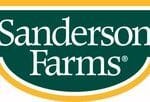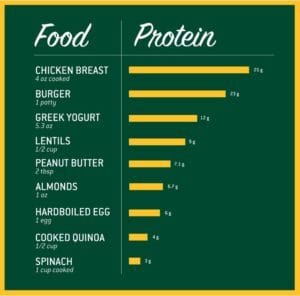- Food Industry Executive
- Posts
- Not all Protein is the Same: Poultry’s Protein Advantage
Not all Protein is the Same: Poultry’s Protein Advantage

Sanderson Farms Explores Why Chicken’s Taste, Cost, and Nutritional Value Give It a Leg Up on Other Proteins
LAUREL, Miss., April 16, 2019 /PRNewswire/ — A surprising number of American shoppers have wildly incorrect beliefs about what foods are the most protein-packed. Consumer research by Nielson found that many people didn’t make the grade when quizzed on their protein knowledge. When asked about poultry, 58 percent of consumers who responded to the survey failed to identify chicken as a high-protein source. To cut through consumer confusion surrounding this vital nutrient, Sanderson Farms spoke to an expert.

“The amount of protein a person needs depends on a variety of factors: age, height, weight, gender, activity/exercise, medical history, and diseases,” said Leah McGrath, Registered Dietitian. “Many Americans may be getting enough protein but often don’t spread it out throughout the day.”
Protein is one of the three major macronutrients needed to sustain life. It plays a role in every cell of the body and is vital to performing essential functions, such as building and repairing cells and keeping the immune system strong. Therefore, it’s vital that a person’s diet include the proper amount of this nutrient throughout the day.
“Animal, seafood, and poultry, including eggs, are versatile and concentrated sources of protein,” said McGrath. “While there are plant-based sources of protein, like beans, grains, nuts, and even protein found in small amounts in vegetables, you typically must eat larger quantities of plant-based products to get protein. Additionally, animal products also contain other vitamins and minerals like iron, B12, and zinc that many plant/grain-based products either don’t have or have in small amounts.”
Protein from plants is often incomplete, meaning it doesn’t provide all of the essential amino acids the body needs, but can’t make. Research appears to show that protein from plant sources isn’t as readily absorbed as proteins from animal-based foods.
“Many of these alternative protein items or plant-based proteins are a mixture of various ingredients, more like a recipe,” said McGrath. “So this may present challenges in terms of the nutritional content, taste, texture, and food allergies that animal products would not. Also, many of these alternative or plant-based products may be higher in price and may not be as versatile for home cooks.”
Of the shoppers polled by Nielson, 78 percent overestimated the protein content of peanut butter, which only contains 8 grams of protein per two tablespoons. Other products misperceived as high-protein included Greek yogurt, which has 12 grams of protein per 5.3 ounces, and cottage cheese, which has 13 grams of protein per 4 ounce serving. To compare, a 4-ounce chicken breast contains 25 grams of protein. Chicken is easily digestible and often the most budget-friendly of lean protein options. Additionally, protein from chicken contains all nine essential amino acids, making it a “complete protein.” Studies indicate that eating poultry, as part of a vegetable-rich diet, can reduce the risk of obesity, cardiovascular diseases, and type 2 diabetes.
“Chicken can be a lean and economical source of protein, and meat from chicken is also a source of various vitamins and minerals, like niacin, iron, and selenium,” said McGrath. “One of the things I appreciate about chicken is how versatile it is. From roasting a whole chicken for my Sunday dinner to strips of grilled chicken on a salad, in a quesadilla or taco, or using chicken meat in a soup or stew, there are lots of ways to enjoy chicken, not just for the protein but also for the taste!”
SOURCE Sanderson Farms